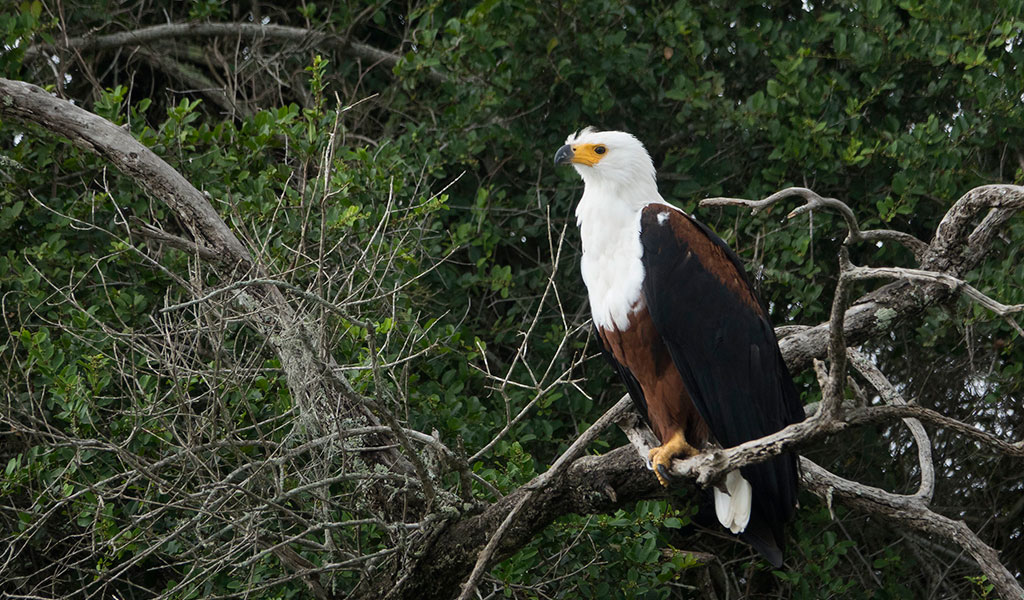Lake Mburo National Park
Lake Mburo National Park, though smaller than many of East Africa’s renowned parks, offers stunning scenery and a rich mix of wildlife, making it a convenient and rewarding stopover between Kampala and western Uganda. Spanning 370 square kilometers, the park features diverse habitats—from rocky hills and open savannas to acacia woodlands, forests, swamps, and several lakes. This variety supports an impressive range of animal and bird species, including some not found elsewhere in Uganda.
The park is home to 69 mammal species and 332 recorded bird species. Among its standout wildlife are impalas—found only here within Uganda—as well as zebras and elands, which are not present in the country’s western parks. Topis are also common, and Rothschild’s giraffes were introduced in 2015 from Murchison Falls National Park, adding to the park’s biodiversity. Though smaller predators like leopards and hyenas are more commonly seen, lions—once absent from the park—have begun returning.
The park’s five lakes host hippos and crocodiles, while the surrounding swamps offer sanctuary to the shy sitatunga antelope. For birdwatchers, Lake Mburo is a treasure trove, especially in the papyrus swamps and acacia zones. Rare bird species such as the shoebill, papyrus gonolek, white-winged warbler, and papyrus yellow warbler can all be spotted here.
Activities & Attractions in Lake Mburo National Park
Game Viewing:
One of the best ways to experience Lake Mburo National Park is by taking a boat ride on Lake Mburo itself. Departing from a jetty near Rwonyo Rest Camp on the lake’s eastern shore, the two-hour cruise offers excellent opportunities to observe wildlife. Along the way, you’re likely to encounter hippos, crocodiles, and a variety of bird species, including herons, pelicans, and fish eagles. With a bit of luck, you might even catch a glimpse of rarer species like the African finfoot or the elusive shoebill.
Game Drives:
The park has a network of game tracks that allow visitors to drive through the savanna and see various animals and birds.
Night Drives:
Night drives with a ranger guide offer a chance to see nocturnal animals like bush babies, pottos, and possibly even a leopard.
Salt Lick Walk:
Guided walks around Rwonyo lead to a natural salt lake. From a timber observation platform, you can watch wildlife as they come to the salt lick.
Forest Walk:
On the western side of the park, Rubanga Forest is home to several forest bird species. You can explore this area with a ranger guide.
Horseback Safaris:
You can go horseback riding in the grassy ridges of the eastern part of the park, with Mihingo Lodge offering this activity.
Mountain Biking:
Rwakobo Rock and Leopard Tail Rest Camp both provide mountain biking trips in the park from Nshara Gate.
View Points:
There are some great viewpoints in the park. South Rwonyo has the Lakeside Track that climbs Kigarama Hill for a panoramic view of Lake Mburo. The Kazuma Lookout, at the top of a steep track from the Ruroko Track near the Kazuma/Research Track junction, offers a dramatic view of Lake Mburo and seven other lakes.
Birding:

The best birdwatching spots in Lake Mburo include the acacia woodland along the Acacia and Research tracks, the wooded shores of the lake from the Rwonyo launch (where you might find the African finfoot), and the northern fringe of the lake’s papyrus wetland.
Getting to Lake Mburo National Park
Lake Mburo National Park is situated between the towns of Masaka and Mbarara, near the main southwest highway connecting Kampala to Bwindi, Kabale, and the Rwandan border. The journey from Kampala covers 228 kilometers and typically takes about 3.5 hours by car. The park is also accessible from Kibale National Park via the towns of Ibanda and Rushere, as well as from Queen Elizabeth National Park through Ishaka and Mbarara. There are three entry points to the park: Kyanyanshara Gate, located near the upscale Mihingo Lodge, lies 18 kilometers south of Akagate trading center, which itself is 14 kilometers west of Lyantonde. Nshara Gate is reached by a 9-kilometer dirt road branching south from the main road just 500 meters west of Akagate. Sanga Gate can be accessed by a 13-kilometer dirt road that begins at Sanga trading center, 13 kilometers from Akagate and 27 kilometers from Lyantonde.
